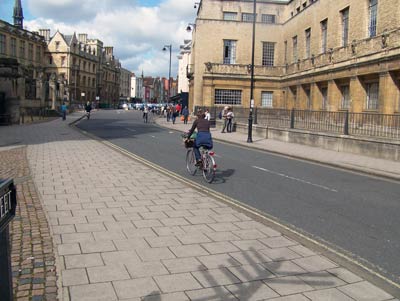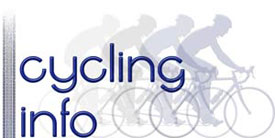
The Royal Borough of Kensington and Chelsea have claimed much success in reducing traffic accidents through a scheme known as ‘Naked Streets’
The idea is that removing road signs and simplifying pedestrian crossings makes drivers think more for themselves, drive slower and drive more carefully.
It is argued that if motorists / road users are bombarded with instructions / signs then they become immune to considering potential risks. It is like drawing by numbers, you don’t have to think – just follow the signs.
This traffic scheme was pioneered by the late Dutchman, Hans Monderman. Hans sought a radical approach to traffic management. He is famous for testing the validity of his schemes by walking backwards into moving traffic. His philosophy was the importance of putting the responsibility onto the road user, rather than trying to direct motorists. Hans said:
“We’re losing our capacity for socially responsible behaviour. The greater the number of prescriptions, the more people’s sense of personal responsibility dwindles.”
I think it raises some interesting points, without offering a blanket solution. Without regulation, motorists do tend to speed. Notorious accident blackspots have seen reduction in accident rates through traffic calming measures.
But, at the same time if there are too many signs / road markings maybe motorists do think less for themselves. I remember reading about a village in the Cotswolds who removed all traffic signs and road signs to great effect (and of course was very pleasing from an aesthetic sense) However, maybe it was effective because motorists aren’t used to roads with no markings. Maybe if every town did it the impact would be limited.
I still think that left to their own devices people drive in dangerous ways, which is why 3,000 people die a year. To make the roads safer, very strong intervention is needed; for example 20mph speed limits. But, it is still revealing to know that more signs does not necessarily help.
The really interesting experiment is when the distinction between roads and pavements is blurred, drivers have to drive in between street furniture and look for subtle changes in the material used. This makes drivers think very carefully about speed and driving. Since this pilot scheme was introduced on New Road, Brighton, it has had a big impact on reducing car use, average speed and has increased the number of cyclists by 93%. (and pedestrian use by 195%)
- How dangerous is cycling?
- Stripping roads of signs at Times
- Naked Streets at Cycling Weekly

Go! go! cyclist i think its one of the best ways to keep fit.
Hi, I found this while trying to find the results of similar experiments in Holland and Germany. Look up Bohmte.
I agree about the novelty factor; that ifevery town did it the impact might be lessened. But aside from the direct issue of signage, I think the Dutchman is right about dwindling ability to make socially oriented choices.
One thing that I think this country needs is a cultural shift. In the US (at least, in California) if a car hits a pedestrian it is assumed it’s the motorist’s fault. And cyclists seem to count as a sort of pedestrian. Here the blame is usually pinned on the person acting most unpredictably, which — due to prejudice — often means the cyclist, whether the other party was a child or a truck.
If we changed this to charge the larger vehicle with the greater responsibility, we’d see a lot more courtesy out there!
HI Matt, good to hear from you. Best luck on returning to Old Blighty.
Hi Rich,
Your site is still going strong! I thought I’d check in and say hi, and this article is definitely interesting about traffic problems. In the US, I’ve gotten used to the bog open roads and sqaure city blocks, but that’s not to say they have their own novel ideas, and problems. For exampe, try crossing the street on the walk sign when the car are still turning for example – it keeps traffic moving, but hard to believe that cars can turn when the pedestrian has the right of way, sometimes. This all makes it even weirder when I return to the UK and have to readjust!
Anyway, good to see the site and good luck with the cycling!
Best,
Matt
Interesting plan!
I’d also like to see railings removed – they often herd pedestrians in a bad way and sometimes force them to behave in a counter-intuitive manner. Also, it makes it very easy for cyclists to get ‘hemmed’ in between railings and traffic. I wonder if this will be included with the removal of signs?